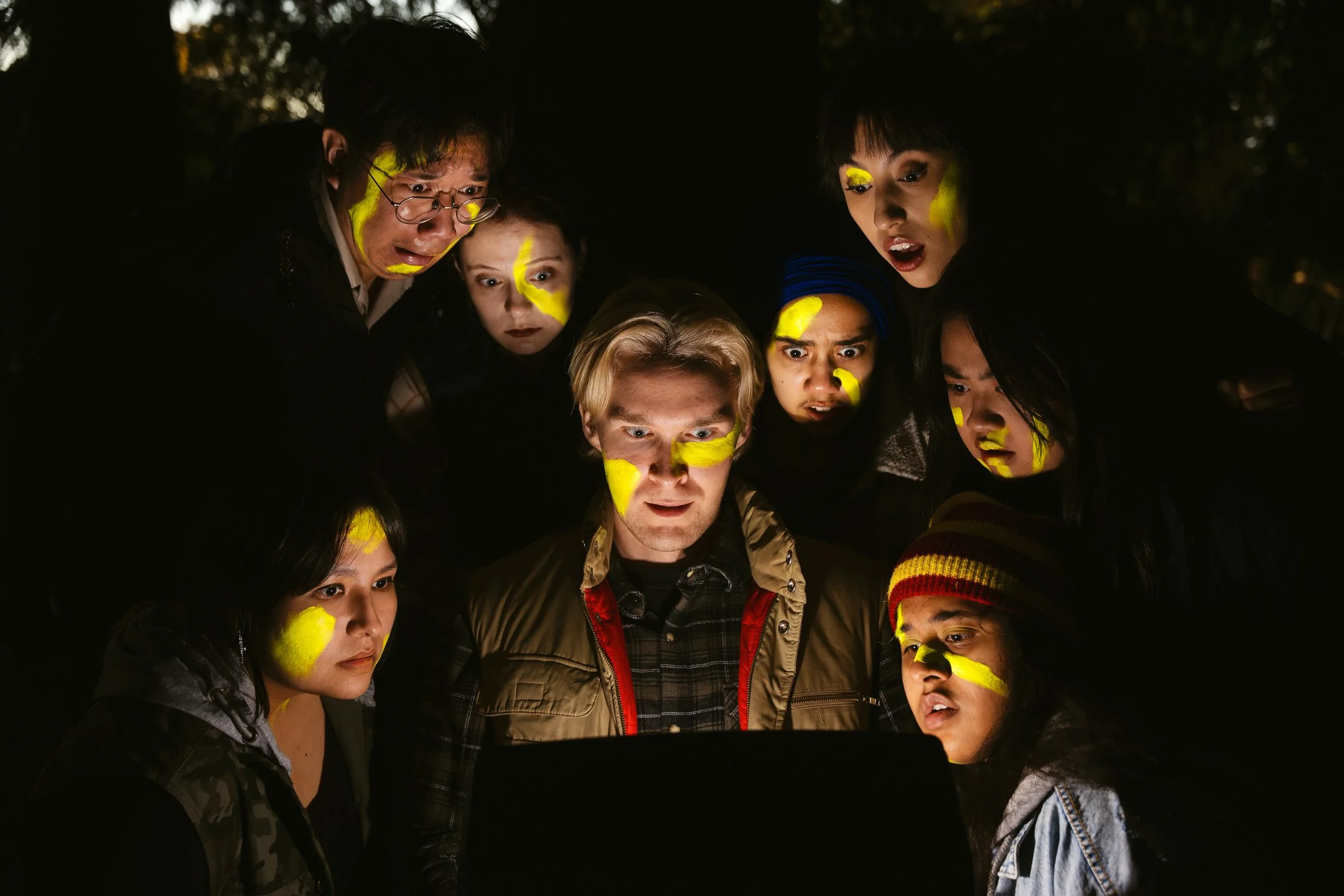Meet August's Featured Artist: Aaron Read!
/Aaron Read | Photo by Lukas Engelhardt
Once the dog stops howling I notice the ants. They’re climbing up my legs, across my stomach and into the styrofoam container holding my burrito. I would later inadvertently transport at least a dozen of the busy creatures into my apartment. But in that moment, reclining on a hill of brown, scratchy grass, the sun trust-falling slowly backwards into the arms of the far side of earth as Aaron Read and I pour various hot sauces onto our dinners—I don’t mind.
The small white dog on the balcony of a house overlooking the park we’re in, seemingly unprovoked, howls again. It’s piercing and a little unnerving, adding to the somewhat strange, endearing moment I am currently in—mowing down a tasty burrito and enjoying a lovely conversation in the warm glow of an August sunset… while covered in ants. It’s a lot like the scenes Aaron creates in his art. There’s a tension in those worlds, between the fanciful and the foreboding, the characters in them relishing whatever it is they’re doing—but their anxieties are apparent, crawling over their skin.
99% angel. Acrylic on paper, 2018.
As a teenager, Aaron was obsessed with Chad VanGaalen to the point where it “became a problem” for him, worried his love of VanGaalen’s work was leading him to imitate it. Chad’s shifting, amorphous illustrations and haunting, bizarrely ethereal alt-rock an obvious inspiration for Aaron’s own music and visual art, but the differences in their works are clear. Plus, nearly fifteen years of improv—eleven of which spent with the inimitable Sunday Service—have only helped to further form Aaron’s distinct style. Subtle comedic elements in his drawings are familiar of his performances, which makes sense, as he believes there’s a creative through line between all of his practices. Even Rats Can Feel The Sun, one of Aaron’s early albums, features artwork of an imagined magazine called “Dunk Boys.” A stand-up bit of his would also later make reference to a film called “Dunk Boys” —on-stage Aaron detailing his dream acting role as a talking basketball who gives life-advice to unreceptive teenagers. A very Read-ian concept that has dribbled its way into different areas of his life.
Rainbow Holder. Ink on paper, 2018.
They all feed into one another. Comedy–Music–Art. However, of that cycle, Aaron says he struggles the most with his art. An on-again, off-again relationship that he has only picked up steady again in the past few years. He’s still not fully confident in what, to myself and others, is his irrefutable talent, even questioning why SAD Mag wanted to have him be August’s featured artist. But while he may be more comfortable and sure of his other pursuits, he still has ambitious designs for his art—a 114-page narrative rough of a comic sits at home, a project he hopes to flesh out further at some point. Animation is another. And Aaron has been steadily showing his work around Vancouver in shows like Mixed Gems, with hopes of doing more.
There are more overarching goals, as well. Aaron says he “wants to understand better what it is that he’s trying to make” with his work, and above all, to “just like [his] art.” Relatable. His desire to constantly create and try new things is not as common, though. That willingness to do so despite being skeptical of his own abilities, is an attribute that has clearly had a hand in bringing him to the position he’s in now. That drive a key to artistic and personal growth.
Anxious Love. Ink and digital, 2018.
Sitting at his desk, pen perched above paper, is a meditative thing for Aaron, which he says helps with his anxiety. It’s a place where those anxious thoughts are allowed to jump around, smash into one another and perhaps mush together in some way that might be hard to comprehend. But on paper, it’s another world where sense doesn’t necessarily have to be made. Dunk Boys. Songs with titles like “Teeth are All Somewhere.” These are all parts of an absurd, beautiful universe Aaron has built for himself.
While brushing the burrito out of my teeth after our hangout in the park, I notice an ant scaling its way across my tooth brush. I don’t flick it off. Instead, I watch it make its way over the molded plastic. Its strange, subtle movements a small part of bigger scene that wouldn’t be nearly as engaging without it.
Worry Warts. Ink on paper, 2018.
Thumbnail image: Don't do drugs. Don't even do hugs, 2018.










